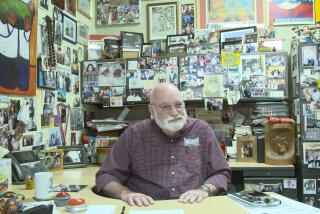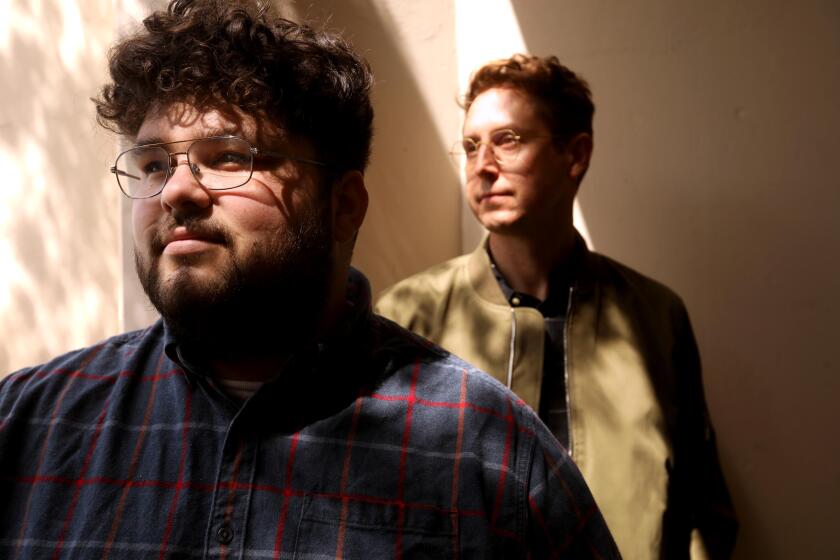Woman accepts lesser charge in death of newborn
For three years, Los Angeles County prosecutors tried to prove that Holly Ashcraft committed murder when the USC architecture student placed her newborn son into a trash bin near the campus.
On Tuesday, they finally gave up.
Under a deal with the district attorney’s office, Ashcraft, 23, pleaded no contest to a far lesser charge -- child endangerment resulting in death -- and will face five years’ probation.
The deal ends a legal odyssey in which judges twice threw out murder charges against Ashcraft. Authorities alleged that she hid her pregnancy and after secretly giving birth in 2005 dumped her newborn son near a popular campus hangout.
They also argued it was not the first time she had disposed of a newborn. Ashcraft was investigated by police, but not arrested or charged, in April 2004 after she arrived at a Los Angeles hospital having just given birth but without a baby, who was never found.
Victoria Adams, the head deputy of the district attorney’s Family Violence Division, said her office did the right thing seeking the most severe charges against Ashcraft. But given the difficulty in getting the case to trial, the deal was the best way to resolve the case.
“All we can rely on is the forensics and the coroner’s testimony that the baby was born alive,” Adams said. “This was a baby with a very short life and couldn’t speak for himself. It’s our job to speak for him.”
Under the plea agreement, Ashcraft will not spend any additional time in custody. Instead, prosecutors agreed to two years’ time served and five years’ probation.
“Holly wants to close this chapter, finish school and move on with her life,” said Ashcraft’s attorney, Mark Geragos. “It was in the interest of both parties to resolve this in a fair way.”
He added that Ashcraft, who came to USC from Montana, was hoping to re-enroll in college but it was not clear which one or where.
Ashcraft, who at the time of her arrest was a third-year architecture student, told authorities that the child was stillborn and that she had disposed of its body.
Key to the state’s case was the opinion by Deputy Medical Examiner David B. Whiteman, who concluded that the boy had been born alive after a 32-week pregnancy and said his homicide finding was based on “caretaker neglect.”
But in court, prosecutors have struggled to get their case going.
In his March 2007 ruling, Superior Court Judge David Wesley questioned whether there was evidence to show that Ashcraft acted with malice.
“The whole prosecution’s case rests on whether the child lived for any appreciable time after it came out of the birth canal, if it lived at all,” Wesley said. “That is the issue in this case. . . . There are a lot of ifs.”
Superior Court Judge Kathleen Kennedy concurred last December, telling prosecutors: “What she’s done is disturbing . . . it’s disgusting . . . but I don’t think the people have proven murder. The evidence is not there.”
California law allows prosecutors to file the same charges twice. If charges are dismissed two times, prosecutors are barred from filing a third time, leaving the lesser charge of child abuse causing death.
But there is debate among legal experts about whether prosecutors should have pushed so hard for murder -- or whether they could have gotten Tuesday’s deal much sooner.
“I realize they are trying to seek justice for the victims, but how many resources go into prosecuting a murder charge like this when the state could have pursued or perhaps even settled it as a manslaughter case?” said Loyola Law School professor Stan Goldman. “Sometimes you end up losing the war by trying to fight every battle.”
Other legal observers said prosecutors made the right decision. They point out that local and state governments have been aggressively working to encourage mothers of unwanted children to turn them in safely rather than abandon them. Los Angeles County, for example, has a “safe surrender” program that allows mothers to drop off newborns at local emergency rooms or fire stations, with no questions asked.
“They were expressing the community’s interest in saving newborns from this kind of fate, especially at the hands of somebody that allegedly had done it once before,” said Southwestern Law School professor Robert Pugsley. “The fact that judges found insufficiency in the proof is no negative reflection on the office of the district attorney, as reflected in the seriousness of the event. They did their absolute best to bring a case against this woman.”
Adams of the district attorney’s office said the Ashcraft case proved one thing: “Child abuse is real and it happens in all communities.”
--
More to Read
Start your day right
Sign up for Essential California for news, features and recommendations from the L.A. Times and beyond in your inbox six days a week.
You may occasionally receive promotional content from the Los Angeles Times.






